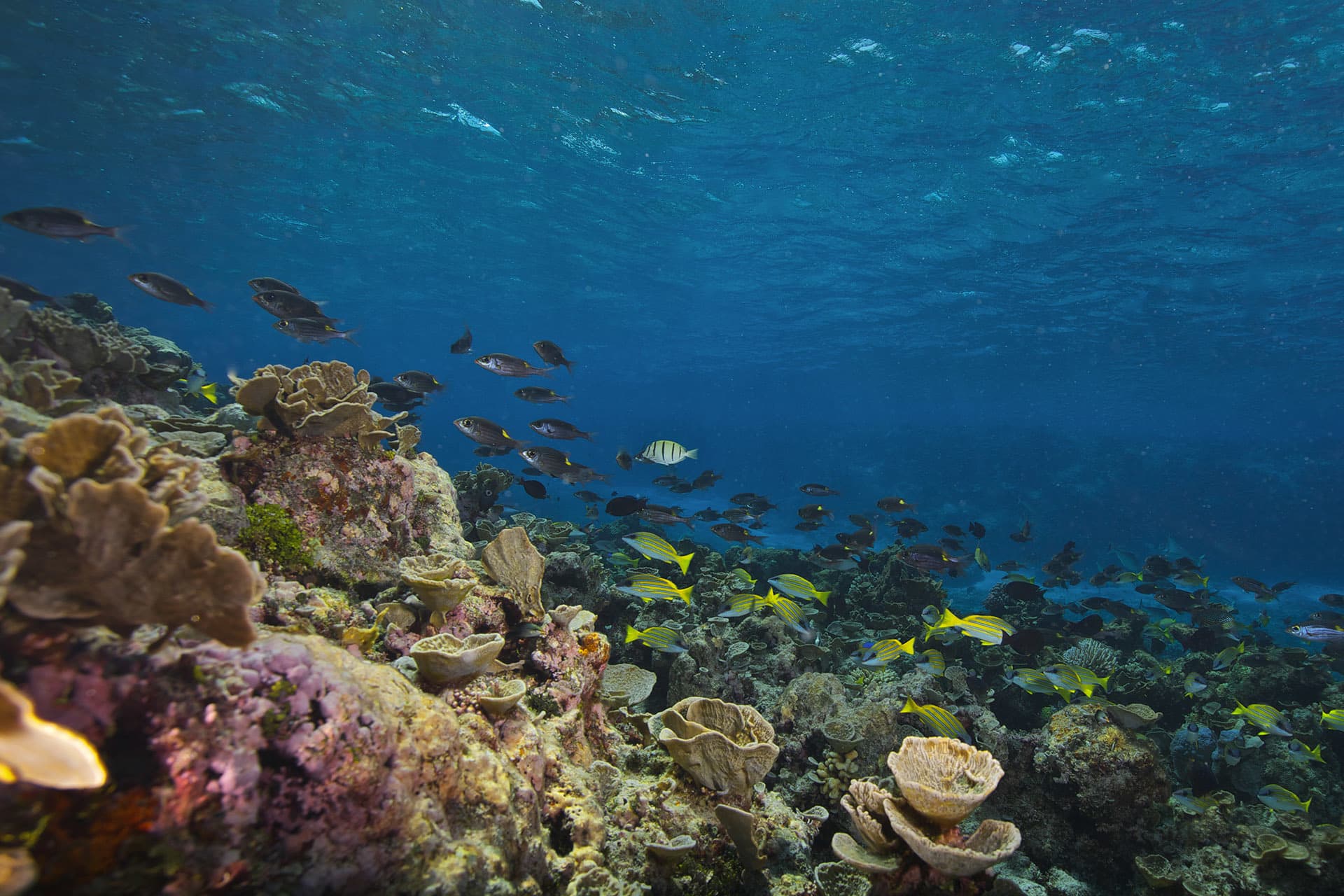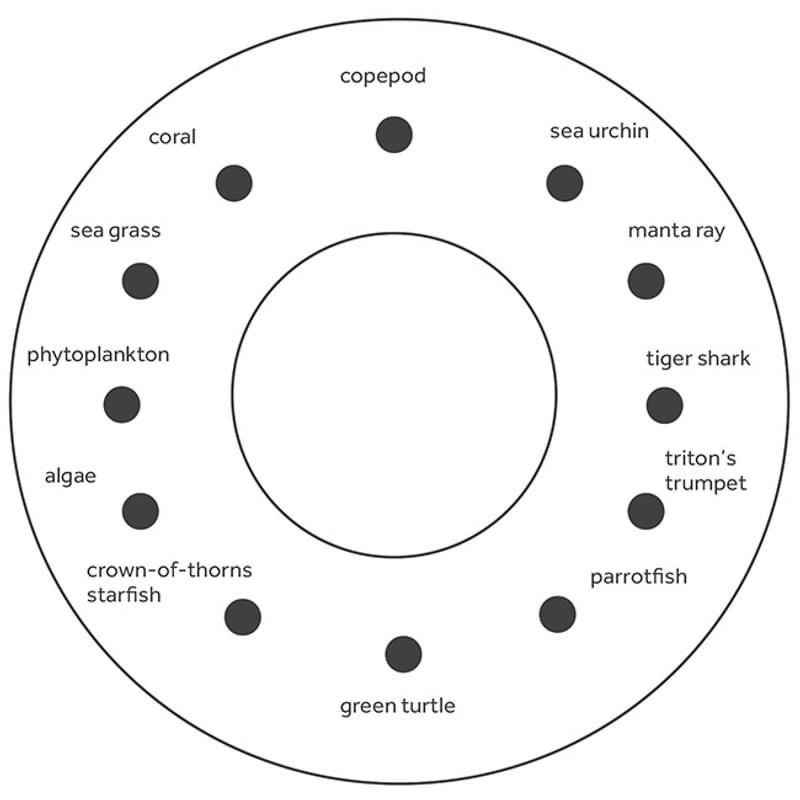Coral food web

Feeding relationships are a lot more complex and interesting than ‘Nemo’ being chased by a shark. In this activity, you will create a food web linking the different life on the reef.
Ages 11+
20 minutes
Part of:
AXA Ocean EducationIt is often quite tricky to ‘see’ all the relationships between the different plants and animals in an ecosystem and so scientists use the idea of a food web to show how different life on the reef is connected.
As you start to connect the different life on the reef with wool or string, you will start to see the web develop. A healthy reef requires a balance between the different living things. If any of the individual animals or plants is affected by human activity or natural events, then the whole reef is affected.

Activity steps
- Cut out a ring of cardboard at least 20 cm in diameter, and the width of the ring at least 5 cm.
- Punch 12 holes around the ring at evenly spaced intervals like a clock face.
- Write the names of the following coral life next to the holes: coral, sea grass, phytoplankton, algae, crown-of-thorns starfish, green turtle, parrotfish, triton’s trumpet, tiger shark, manta ray, sea urchin, copepod.
- Take a length of wool or string.
- Tie the wool to a producer.
- Link this producer to the next living thing along the food chain by passing the wool or string through each hole, e.g. link the algae to the sea urchin, and then to triton’s trumpet. Information about feeding habits of coral life is included in the Coral reef gallery.
- When you have reached the top predator in that food chain, tie the wool around this hole to end the chain.
- Repeat the process for all the food chains that you can identify on the reef. Once you have finished you will have completed a food web.
Safety guidance
- This activity requires cutting out a cardboard ring and making holes in the cardboard. These will need to be done using adult supervision or, for younger children, an adult can create the cardboard template for children and allow them to connect the different species using string.
Brought to you by

Celebrating
